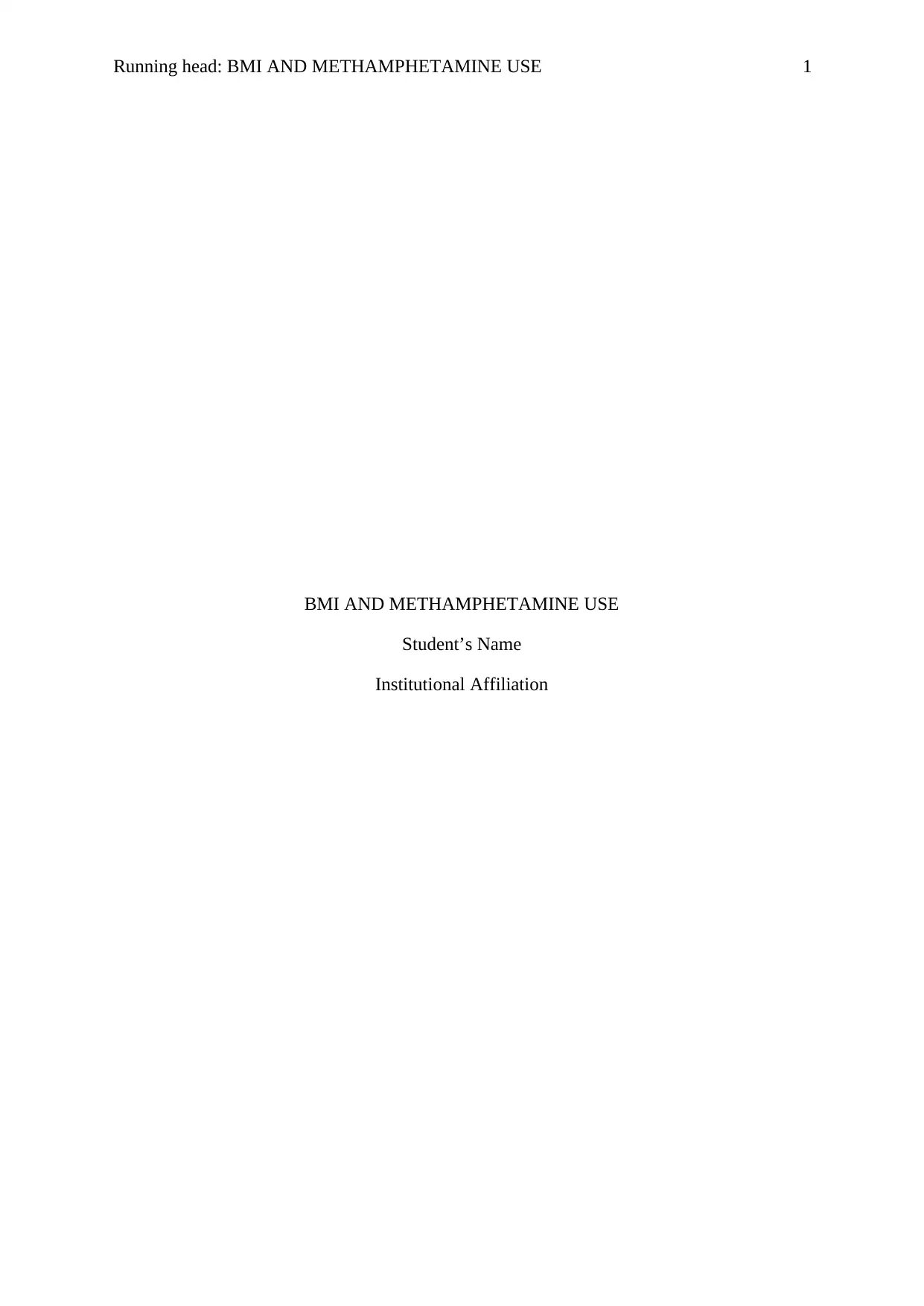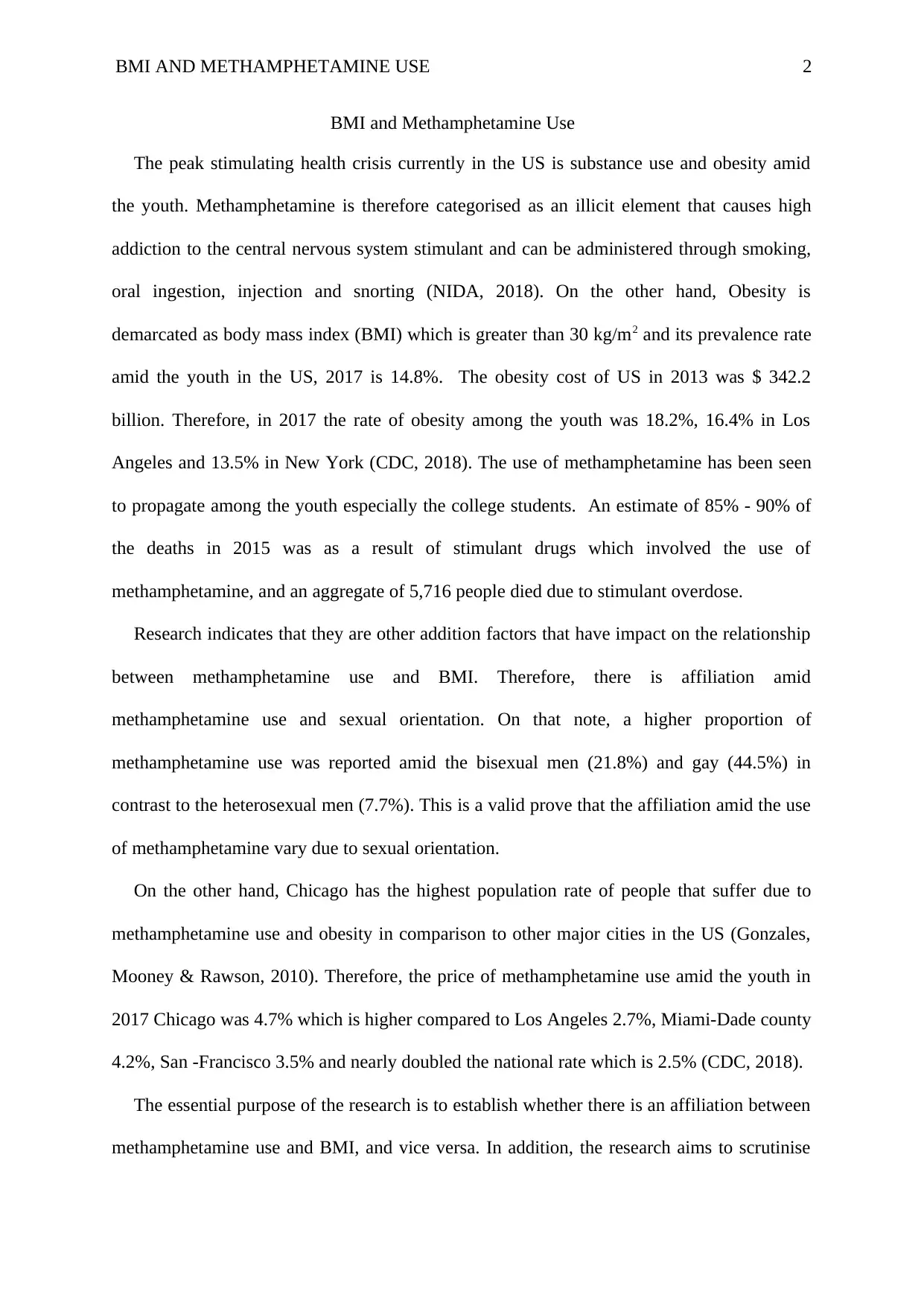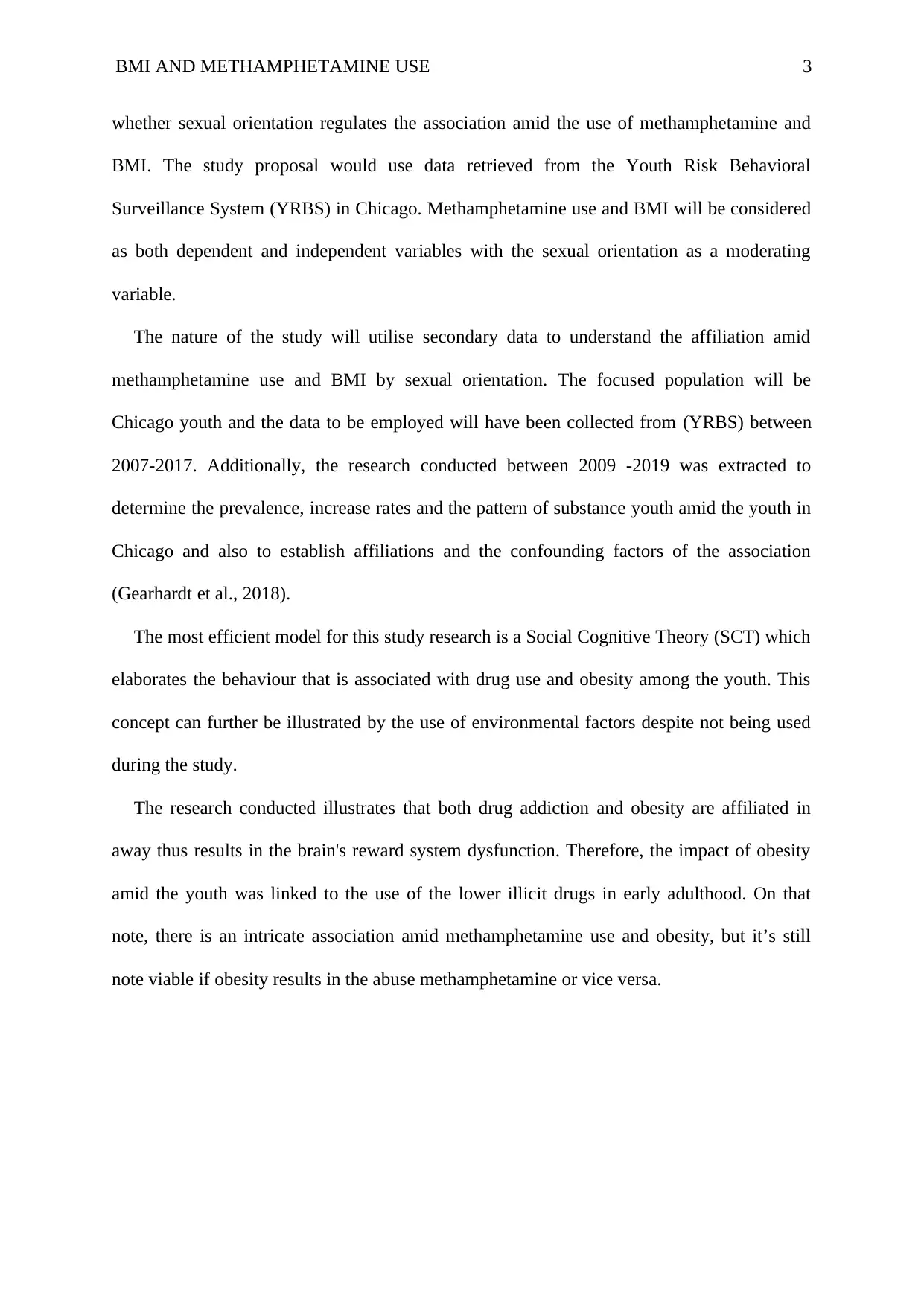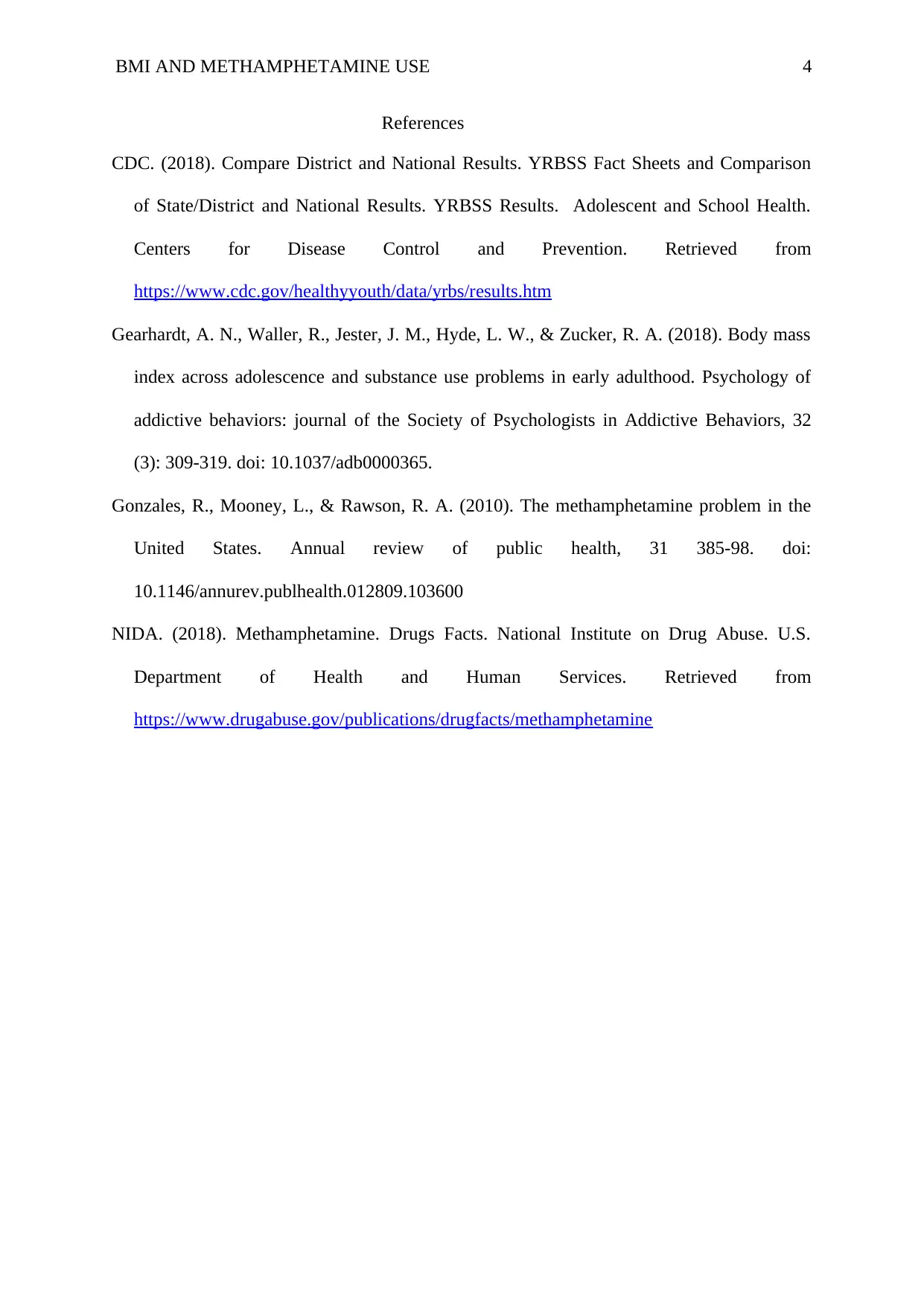Investigating BMI, Methamphetamine Use, and Sexual Orientation
VerifiedAdded on 2022/12/27
|5
|906
|24
Report
AI Summary
This report examines the relationship between Body Mass Index (BMI) and methamphetamine use, focusing on the youth population in the United States, particularly in Chicago. The study investigates the prevalence of methamphetamine use and obesity, highlighting the significant health crisis. The research explores the connection between methamphetamine use and sexual orientation, noting higher rates among bisexual and gay men compared to heterosexual men. The study proposes using data from the Youth Risk Behavioral Surveillance System (YRBS) to analyze the association between methamphetamine use and BMI, considering sexual orientation as a moderating variable. The Social Cognitive Theory (SCT) is applied to explain the behaviors associated with drug use and obesity. The report concludes by emphasizing the complex relationship between methamphetamine use and obesity, acknowledging the need for further research to determine causality.
1 out of 5












![[object Object]](/_next/static/media/star-bottom.7253800d.svg)